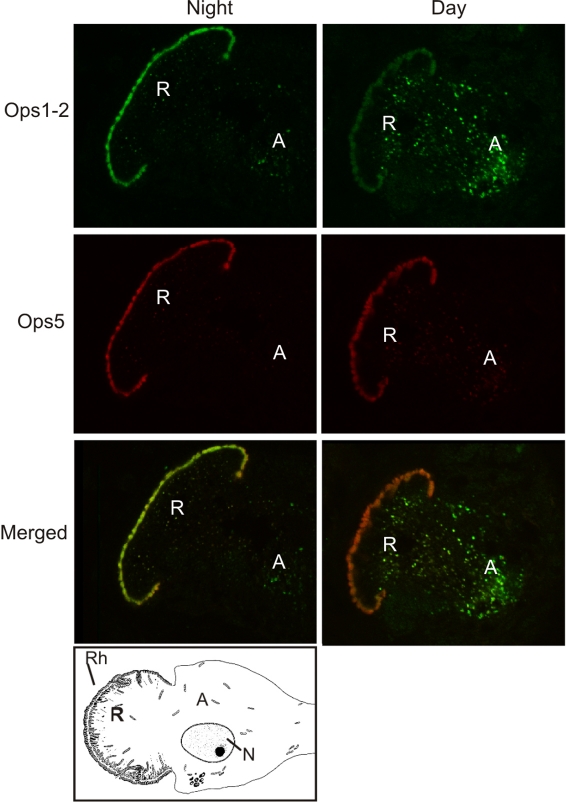Fig. 7.
Ops1-2-immunoreactivity (Ops1-2-ir) and Ops5-ir in the R- and A-lobes of ventral photoreceptors. Ventral eye end organs of animals maintained under natural illumination were fixed during the night, between 18 and 20 h after sunrise, and during the day (D), ∼10 h after sunrise. Frozen sections of the end organs from two night-time and two daytime animals were immunostained at the same time, and six photoreceptors for each animal were imaged in a single session with identical confocal settings. Shown are the sequential scans and merged images of single optical sections of photoreceptors representative of those typically observed in night-time and daytime animals. A simplified diagram of a ventral photoreceptor cell body is located below the fluorescent images. Rhabdomeral Ops1-2-ir is lower in daytime compared with night-time photoreceptors while the amount of Ops1-2-ir debris in the R- and A-lobes is greater during the day compared with the night. Rhabdomeral Ops5-ir appears to change little between night and day, although the amount of Ops5-ir debris observed in the R- and A-lobes is also higher during the day. Rh, rhabdom; R, rhabdomeral lobe; A, arhabdomeral lobe; N, nucleus.

